- Academia
- For Corporate
- Cashless Facilities
- Media
- Donate
#NoCompromise
- 020 6609 9888 | +91 9168013322
#NoCompromise

Our eyes have a natural lens that helps us see. The lens gets clouded with age, making it difficult to see. So, cataract is a natural condition caused by age.
Through cataract surgery, the clouded lens is replaced with a transparent, man-made IOL (Intraocular lens). This is safe and painless.
With the right treatment at the right time, your vision will be restored to how it was earlier.

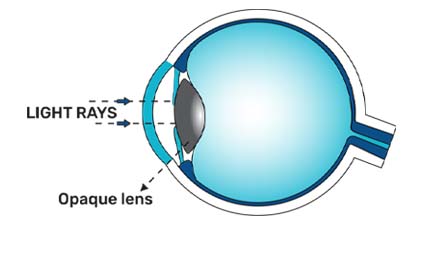
When light enters your eyes, it helps them see things around. This is because the natural lens of the eye works like the camera lens. When light falls on it, the lens focuses the light onto the retina at the back of the eye. The retina collects the light and sends a message to the brain, enabling you to 'see' the image. The clearer the lens, the easier for light to pass through it to reach the retina.
A cataract is just the natural clouding of the lens of the eye. It’s not a growth, film or disease in the eye, but a natural condition caused due to age. When the lens gets cloudy or opaque, light cannot pass through it, leading to blurred vision. If not treated, it can lead to complete blindness over time as the condition progresses.
Cataract accounts for nearly 50% of the cases of blindness and vision impairment worldwide.
Fortunately, cataracts are completely curable.
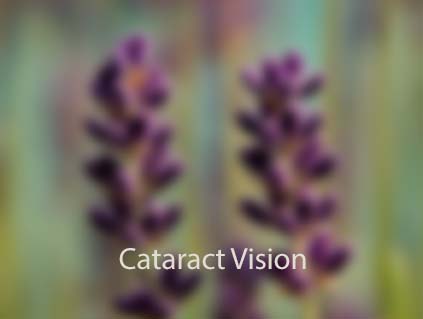
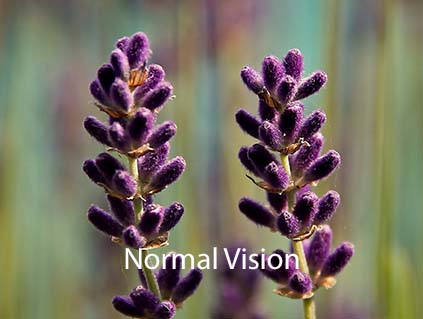
Cataracts may develop slowly over years, or rapidly within months. They are characterised by painless, gradual blurring of vision. Often both eyes may be affected at the same time, but this is not always the case.
In the early stages, glasses help improve vision. But not in advanced stages. Watch out for these symptoms:
















The main cause of cataracts is age. Proteins in the natural lens degenerate making it cloudy.
But there can be other reasons such as underlying health conditions or prolonged use of certain medications.
The main cause of cataracts is age. Proteins in the natural lens degenerate making it cloudy.
But there can be other reasons such as underlying health conditions or prolonged use of certain medications.
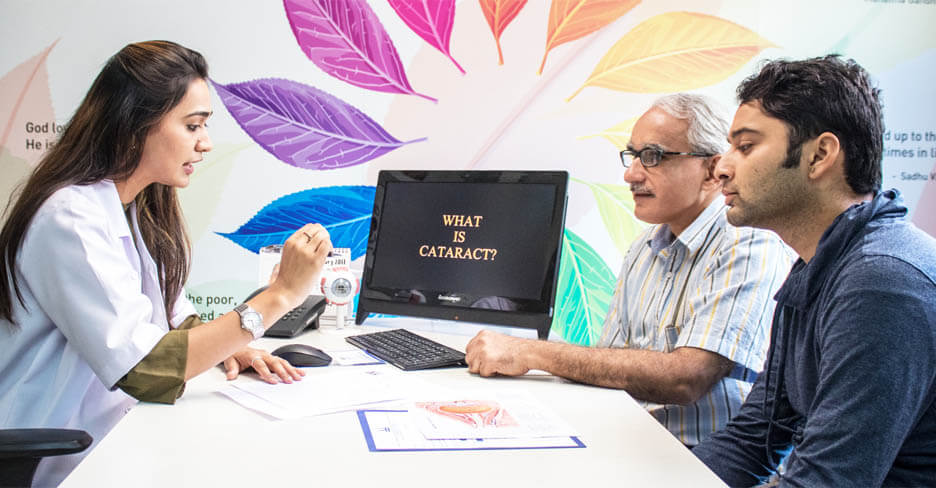
There is no reason to fear cataracts. Once diagnosed, it can be treated easily, safely and inexpensively through surgery. It cannot be cured or prevented by medications, eye drops or dietary changes. So, it’s best to visit an eye doctor at the earliest.
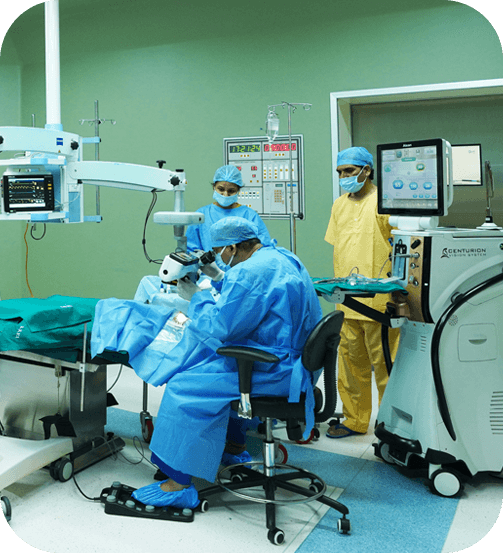
It is a modern cataract surgery performed under local anaesthesia. An instrument that utilises ultrasound energy is used to break down your cataract. It is then removed with a special probe. A foldable intraocular lens is implanted in its place.
A smaller incision of 2.4 to 2.8mm is sufficient for this cataract procedure. This results in lesser astigmatism (an imperfection in the curvature of the eye) and better quality of vision.
This surgery is performed under topical anaesthesia, so there is no eyepatch and you will be given a pair of dark glasses immediately after the surgery. This is a day-care procedure after which you are free to go home. This modern cataract surgery technique offers quick healing and faster postoperative visual recovery.
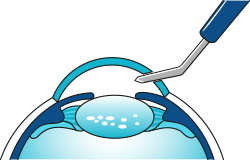




This is an advanced cataract surgery where the cataract is removed through phaco-emulsification by making a very small incision size ranging between 2.2 to 2.4mm. This heals faster and induces even lesser astigmatism (imperfection in the curvature of the eye).
This is a suture-less type of cataract surgery where the clouded lens is removed manually through a large-sized incision and replaced by a non-foldable intraocular lens. This surgery is done under local anaesthesia. An injection is given on your upper or lower eyelids to anaesthetize the eye. A patch is applied to your eye after this surgery for around 6 hours till the effect of anaesthesia wears off.
Since this surgery involves a larger incision, the postoperative visual recovery takes a little longer than Phacoemulsification and postoperative astigmatism is also more than Phacoemulsification.
However, it is the preferred technique for certain types of hard cataracts and some complicated cases of cataracts for good visual outcomes.
Thorough clinical examination and precise IOL power calculations are performed before cataract surgery. Your counsellor will provide you with a range of lOL options. Your doctor may recommend a type of IOL that may suit your visual needs and clinical profile to give you the best possible visual outcome.
Monofocal is the basic lens that is implanted that provides good distance vision, but glasses are needed for reading and intermediate vision.
It can correct the vision for distance vision and cylindrical power (if any). You will still need to use glasses for near and intermediate work.
These lenses can improve your near, far and intermediate vision, reducing your dependency on glasses. You can’t do away with glasses completely and may occasionally need them for very fine tasks or to see farther away.
They are slightly different from trifocal lOLs. They are primarily designed to correct distance and intermediate vision. Glasses would be needed postoperation for near reading requirements.
K K Eye Institute offers a wide range of local and imported brands of Intra-ocular lenses to address the differing needs of our patients. Expect the highest quality, latest and most precise lOLs to enhance your vision post-surgery.


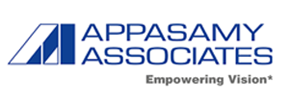





Your and your surgeon’s safety is paramount: GG 475 retina protection filter which reduces the light exposure
The tilting mechanism for the microscope body reduces the exposure of the macula to direct illumination
Surgeons can optimally adapt the light intensity at the patient's eyes as per the conditions prevailing during the surgery
Excellent surgical outcome: Microscope image with optimum contrast and detail recognition along with a large depth of field
A 1:6 ratio zoom system allows the magnification of the overall system to be set as required by the surgical procedures.
A 180° tiltable tube is used as a viewing device for the surgeon, allowing them to work with minimum fatigue
Excellent surgical outcome: Microscope image with optimum contrast and detail recognition along with a large depth of field
A 1:6 ratio zoom system allows the magnification of the overall system to be set as required by the surgical procedures.
A 180° tiltable tube is used as a viewing device for the surgeon, allowing them to work with minimum fatigue
Efficient cataract removal: The system allows for accelerated cataract removal, potentially reducing surgical time.
Enhanced Safety: Active Fluidics™ Technology minimises occlusion break surge, increasing surgical precision and safety.
IOP Management: It dynamically manages intraocular pressure (IOP), providing optimal conditions for surgery.
Consistent IOP: The system can detect and maintain the surgeon-selected IOP, ensuring reliable outcomes.
User-friendly: IA graphical user interface (GUI) simplifies data display and parameter customization for efficient and customised surgeries.
Remote control: The high-definition (HD) monitor with an adjustable touchscreen interface ensures excellent visibility during surgery.
Clear visibility: IA graphical user interface (GUI) simplifies data display and parameter customization for efficient and customised surgeries.
Easy mobility: The foot pedal enables easy machine movement after scrubbing in, streamlining workflow and positioning.
Cataract changes happen in the eye slowly over a period of time. It is usually not necessary to go in for surgery in the early stages. Only when you feel that your day-to-day activities like reading, driving, cooking, etc. are getting hampered even after wearing glasses should you come in for a check-up and plan for surgery.
The concept of "Has the cataract ripened?" is very old and obsolete and not applicable today when surgeries are done with machines under microscopes.
The artificial lens which is placed inside the eye during cataract surgery should not be confused with a contact lens. These lenses are made of highly specialised material and will remain inside the eye lifelong, they don’t have to be changed ever. They don’t have any expiry and do not damage or harm the eye in any way.
Years of research and refinement in all stages of treating a cataract right from examination of the eye, lens power calculations, lens designs and sophisticated surgery machines have made cataract surgery a fast and extremely safe procedure. Also now it is possible to regain vision to the same extent as before the cataract but without the hassle of spectacles, that is to say, that both distance and near vision would be possible without spectacles. However, there are other aspects which have to be taken into consideration like any underlying eye problem for example due to diabetes etc. Therefore, a careful/detailed eye examination and discussion with our doctors will give you a clear picture of what to expect. And we ensure to deliver the best possible for you.
You will be able to see normally in a few days. However, doctors prescribe some precautions that need to be taken to ensure nothing infects the eye.
Cataract is an outpatient procedure, you don’t need to stay overnight in the hospital. However, you will need a family member or a friend to accompany you and take you home.
Sometimes, you may experience blurred vision months or years after your cataract surgery. It may seem like cataract is back but it’s actually the clouding of the thin capsular bag membrane that keeps your lens implant in place.
Our surgeons can restore clear vision in case of a secondary cataract using a laser to open a visual path through the cloudy membrane. We do this procedure on an outpatient basis and it is extremely safe and simple. You won’t need any stitches or surgery and your vision will improve soon.
Visit K K Eye Institute to know more about secondary cataracts.

©2023-K K Eye Institute | All Rights Reserved
Home | About Us | Specialities | Careers |
Connect | Academia | For Corporate | Cashless Facilities | Media | Donate
Best Eye Hospital | Treatments | Cataract |
Cornea | Diabetic Retinopathy | Glaucoma | LASIK
Cosmetic Eye Surgery | Retina | Children’s Eye Care | Digital Eye Strain | Patient Resources | About Us | Careers | Contact Us
Support | Privacy Policy | Terms of Use
